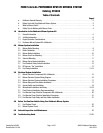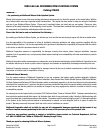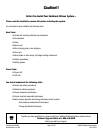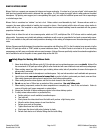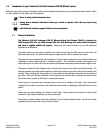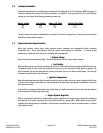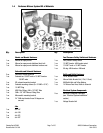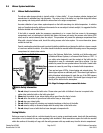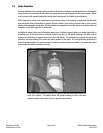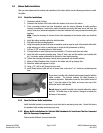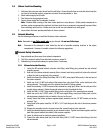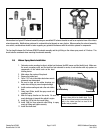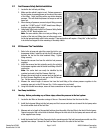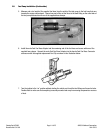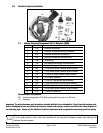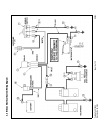
Catalog Part #70402
Brochure No. 63-0164
©2003 Edelbrock Corporation
Rev. 02/03
Page 4 of 25
WHAT IS NITROUS OXIDE?
Nitrous Oxide is a cryogenic gas composed of nitrogen and oxygen molecules. It is stored as a “gas over a liquid” which means that
both liquid and gaseous nitrous oxide is delivered into your engine. It is 36% oxygen by weight, which is what produces the added
horsepower. By injecting more oxygen (and a corresponding fuel signal), we create the additional power much like a supercharger
or a turbocharger does.
Nitrous Oxide is considered an “oxidizer” and not a fuel. Nitrous oxide is non-flammable by itself. Because nitrous oxide is a
cryogenic, the same safety methods in handling dry ice apply to nitrous. Direct contact with the skin will cause a burn similar to
contact with dry ice. The exception in using nitrous oxide comes from increased breathing hazards associated with the gaseous
properties of nitrous oxide.
Nitrous Oxide is offered for sale in two common grades, which are U.S.P., and
Nytrous Plus
. U.S.P. nitrous oxide is medical grade
nitrous oxide. Its common use is dental and veterinary anesthesia as well as use as a propellant in food such as canned whip cream.
U.S.P. is not available to the public and would provide no advantage in the making of horsepower over the automotive grade nitrous
oxide.
Nytrous Plus
was specifically designed for automotive consumption and differs from U.S.P. in that it contains trace amounts of sulfur
dioxide (100 parts per million or “PPM”) added to prevent substance abuse. The Sulfur Dioxide is an irritant to all of your breathing
passageways and will cause sore throats and sore nasal passages.
Nytrous Plus
was specifically created for automotive applications
and is available for sale to the public at many speed shops across the USA.
Safety Steps For Working With Nitrous Oxide
1. Never inhale
Nytrous Plus
(Nitrous oxide (N
2
O) for vehicular use) as continued exposure can cause death.
Nytrous Plus
has a maximum of 100 parts per million (ppm) of sulfur dioxide and will cause irritation to nose and throat passageways.
2. When working around any high-pressure gas including nitrous oxide, take all precautions to ensure that exposure to
nitrous oxide is minimized.
3. Do not vent nitrous oxide to atmosphere in confined spaces. Only vent nitrous oxide in well-ventilated and open areas.
4. Liquid nitrous oxide can cause burns to human flesh so protect all skin in and around your hands, arms and face.
Wear safety glasses and rubber gloves to protect from liquid nitrous oxide splatter.
5. When venting down the nitrous system, vent the line down closest to the nitrous bottle.
6. Do not use any form of Teflon tape as sealant on fitting connections. Use only Teflon paste.
7. When washing components, ensure the clean components are completely dry, free of oils, and solvents. Failure to
remove all liquids could cause component or system failure.
8. Always turn the bottle off before making any repairs to the nitrous delivery system.
9. To safely release nitrous oxide in a pressurized line;
a. Position vehicle in a well-ventilated, unconfined space.
b. Turn bottle off.
c. Slowly loosen the nitrous feed line at the bottle until you hear a light hissing noise.
d. Allow the entire nitrous pressure to vent from the line.
e. Perform your work on the system.
f. Tighten the nitrous line to the bottle.
g. Slowly open the nitrous bottle valve, listening for leaks.
h. Perform leak checks on all affected fittings and the bottle fitting.



